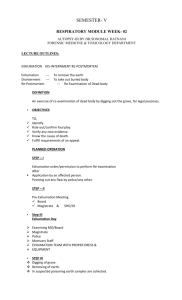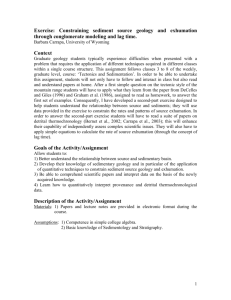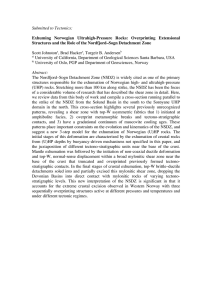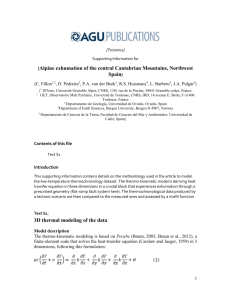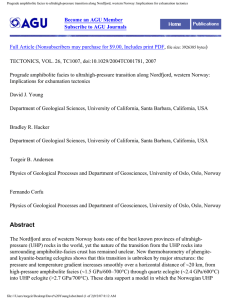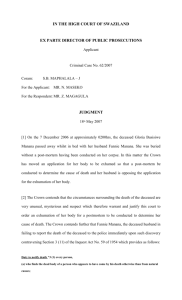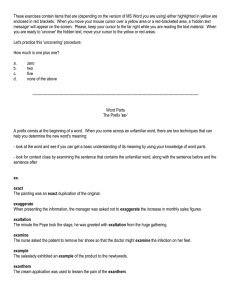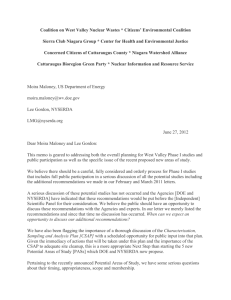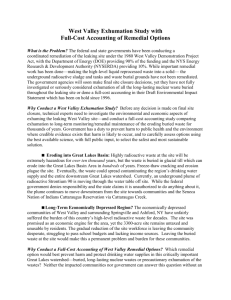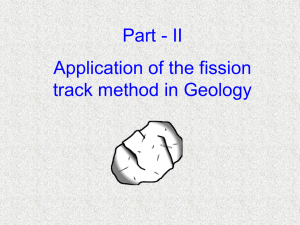Constraining sediment source geology and
advertisement
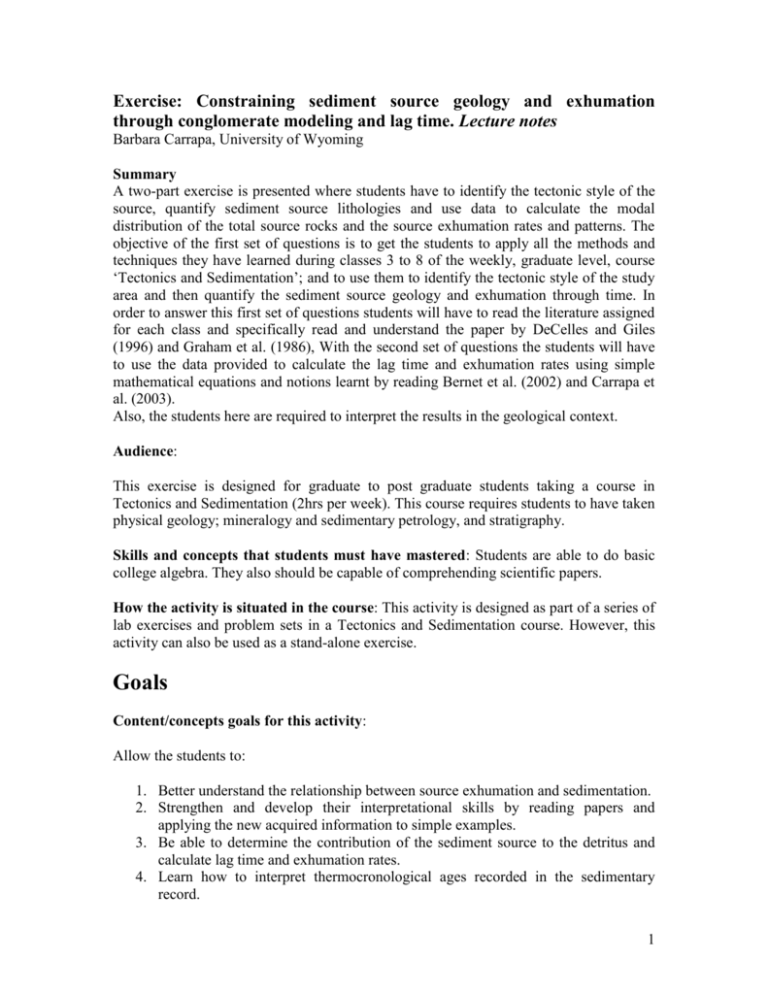
Exercise: Constraining sediment source geology and exhumation through conglomerate modeling and lag time. Lecture notes Barbara Carrapa, University of Wyoming Summary A two-part exercise is presented where students have to identify the tectonic style of the source, quantify sediment source lithologies and use data to calculate the modal distribution of the total source rocks and the source exhumation rates and patterns. The objective of the first set of questions is to get the students to apply all the methods and techniques they have learned during classes 3 to 8 of the weekly, graduate level, course ‘Tectonics and Sedimentation’; and to use them to identify the tectonic style of the study area and then quantify the sediment source geology and exhumation through time. In order to answer this first set of questions students will have to read the literature assigned for each class and specifically read and understand the paper by DeCelles and Giles (1996) and Graham et al. (1986), With the second set of questions the students will have to use the data provided to calculate the lag time and exhumation rates using simple mathematical equations and notions learnt by reading Bernet et al. (2002) and Carrapa et al. (2003). Also, the students here are required to interpret the results in the geological context. Audience: This exercise is designed for graduate to post graduate students taking a course in Tectonics and Sedimentation (2hrs per week). This course requires students to have taken physical geology; mineralogy and sedimentary petrology, and stratigraphy. Skills and concepts that students must have mastered: Students are able to do basic college algebra. They also should be capable of comprehending scientific papers. How the activity is situated in the course: This activity is designed as part of a series of lab exercises and problem sets in a Tectonics and Sedimentation course. However, this activity can also be used as a stand-alone exercise. Goals Content/concepts goals for this activity: Allow the students to: 1. Better understand the relationship between source exhumation and sedimentation. 2. Strengthen and develop their interpretational skills by reading papers and applying the new acquired information to simple examples. 3. Be able to determine the contribution of the sediment source to the detritus and calculate lag time and exhumation rates. 4. Learn how to interpret thermocronological ages recorded in the sedimentary record. 1 Higher order goals for this activity: This exercise requires students to critically analyze and interpret data; includes basic statistics mathematical analysis. Description of the activity/assignment During classes 3 and 4 students have learnt different foreland basin systems and mechanisms responsible for basin formation. Through a serious of short exercises in class they learn how to characterize different depozones in a foreland basin system on the basis of specific tecono-sedimentary features (DeCelles and Giles, 2006). During class 5 they have learnt how to apply different techniques to the sedimentary record such as: paleocurrent analysis (source location and paleoenvironment), sandstone petrography (source type, paleodrainage, paleorelief, climate and tectonics); conglomerate modeling and paleoslope analyses (paleorelief, hydrodynamic behaviour, tectonics), basin analysis (basin formation dynamics), detrital thermochronology (provenance, rates and pattern of exhumation, minimum depositional age). During classes 6 to 8, they have learnt basic concepts in detrital thermochronology. Determining whether students have met the goals Learning outcomes are assessed based on the following: 1. Active participation of the students in classes. 2. Ease with which students can solve simple problems in class (lab) exercises. 3. Ability of students to apply notions and formulas learnt though homework reading to future lab exercises involving exhumation pattern and rates. 4. Quantitative assessment through graded course work (50%) and a final 3 hour written exam (50%). 2
